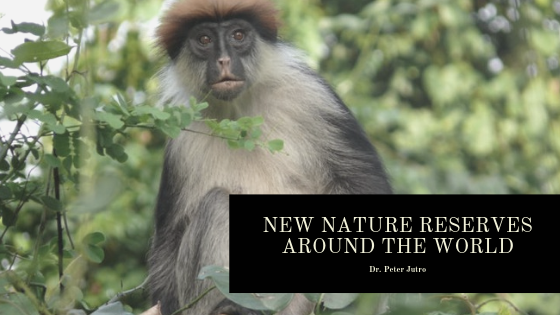Every year, conservation groups and/or governments struggle to get sites designated as nature or biosphere reserves. To become a designated biosphere reserve, a country has to submit a proposal to the International Coordinating Council of the Man and Biosphere Programme (MAB) to add the area to the UNESCO World Network of Biosphere Reserves. The proposals can be rejected because there are no communities near it or a lack of financial support. Each nature reserve is under the sovereign jurisdiction of the government in which it is located. According to UNESCO, these biosphere reserves are “areas compromising terrestrial, marine and coastal ecosystems and are designated ‘learning places’ for testing different and sustainable approaches.” Below are some of the new nature reserves.
1) Magombera Nature Reserve, Tanzania — Over 6,400 acres are protected, which are preserving a biodiverse forest ecosystem in Tanzania, Africa. Rainforest Trust teamed up with a consortium of stakeholders, including a theme park, four African villages, and the government of the United Republic of Tanzania, to create and manage Magombera. This nature reserve is vital to the survival of primates. Magombera was named a “top 10 Priority Primate Area,” which is home to a number of endangered species, such as the Udzungwa Red Colobus Monkey and the Udzungwa Dwarf Galago. The funding came from Rainforest Trust, World Land Trust and the Aage V. Jensen Charity Foundation.
2) Grand Bois, Haiti — This is Haiti’s first-ever private nature reserve. It contains endangered animals and plants that are being saved from becoming one of the many disappearing forests in the country. In fact, Haiti currently is covered by less than 1% of its original primary forest. This is another nature reserve that received funding from the Rainforest Trust and Global Wildlife Conservation. In its 1,200 acres, there are 68 species of rare vertebrates with animals and plants that were thought to be extinct, among them are the Tiburon Stream Frog and Ekman’s Magnolia Tree. This is exciting news for the species and for Haiti!
3) National Park Nieuw Land, Netherlands — This new nature reserve will be the biggest in the Netherlands! A collection of existing nature reserves, such as Oostvaardersplassen and Trintelzand, will be combined to form one large park. The project is expected to take 20 years to develop at a cost of €470 million, or more than $500 million. The plan also includes access via the A6 Motorway, which is expected to attract new visitors. The park is not currently a UNESCO world heritage site. Last year, someone from the park put this designation on the official park’s sign. The incorrect designation was removed, but achieving it remains a goal for the park.

